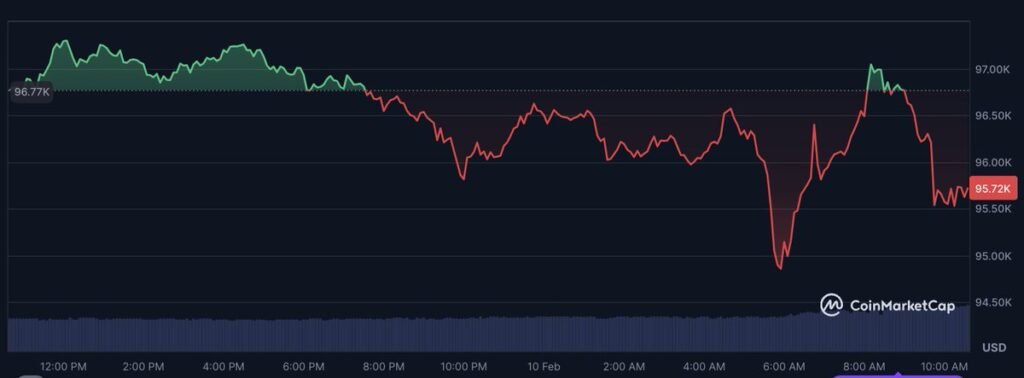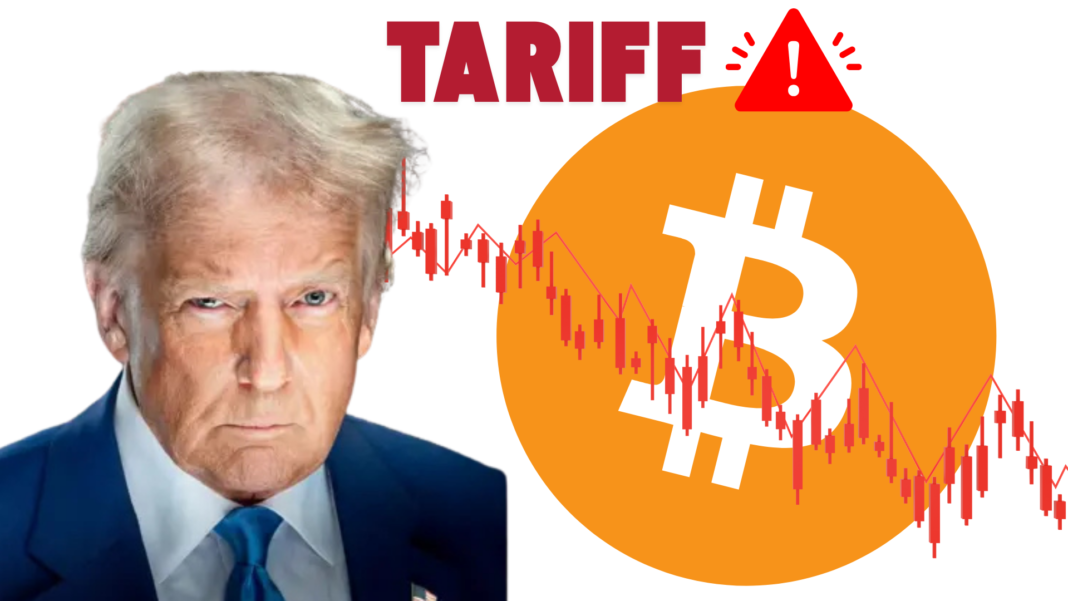The cryptocurrency market experienced a sharp reaction following former U.S. President Donald Trump’s announcement of a 25% tariff on steel and aluminum imports.
Bitcoin (BTC) momentarily dropped to $94,000 before recovering to $97,061 as investors assessed the economic implications of the policy.

The announcement, made aboard Air Force One, is part of Trump’s broader plan to introduce “reciprocal tariffs” aimed at countering perceived unfair trade practices.
While the immediate market reaction reflected uncertainty, Bitcoin’s quick rebound suggests that investors remain confident in its long-term stability despite external economic pressures.
Market Uncertainty and Investor Concerns
Trump’s trade policies have historically sparked market volatility, with retaliatory tariffs from other nations often following his decisions.
The 25% tariff on steel and aluminum, while not yet explicitly linked to the broader reciprocal tariff strategy, raises concerns about potential disruptions in global trade.
Earlier this month, Trump temporarily paused similar tariffs for Canada and Mexico bleeding the crypto market off $200B, citing efforts to curb drug trafficking.
The unpredictability in trade policy has heightened investor caution, as such economic shifts can impact not only traditional markets but also the cryptocurrency sector, which has increasingly been influenced by macroeconomic events.
Bitcoin’s Resilience Amid Market Turbulence
Despite the initial drop, Bitcoin demonstrated resilience by recovering to $97,000, trading at $97,033.31 as of today.
With a 24-hour trading volume of $30.4 billion, Bitcoin has seen only a minor -0.14% decline in the past day but remains up by 2.94% over the past week.

With a circulating supply of 20 million BTC, its market capitalization stands at approximately $1.92 trillion.
The price movement underscores Bitcoin’s ability to withstand external financial shocks and reinforces its reputation as a hedge against economic instability.
However, the broader crypto market has not been immune to volatility, as over $273 billion in crypto liquidations occurred in just 24 hours, wiping out substantial value across Ethereum, Solana, and XRP.
Broader Crypto Market and U.S. Government Developments
Trump’s tariff policy comes amid a wave of new U.S. government initiatives related to digital assets.
The administration-backed World Liberty Tokens (WLFI) are being developed as part of a strategic reserve, reflecting growing governmental interest in tokenized assets.
Additionally, the White House’s newly appointed Crypto Czar, David Sacks, has indicated that the administration is considering a Bitcoin reserve, prioritizing stablecoin regulations as part of broader financial reforms.
Meanwhile, 22 U.S. states are actively pushing for new Bitcoin and digital asset regulations, with states like Wyoming and Arizona leading efforts to integrate Bitcoin into state treasuries.
As regulatory frameworks take shape, Bitcoin’s role in both institutional and retail markets will likely continue to evolve, influencing its price stability and long-term adoption.


